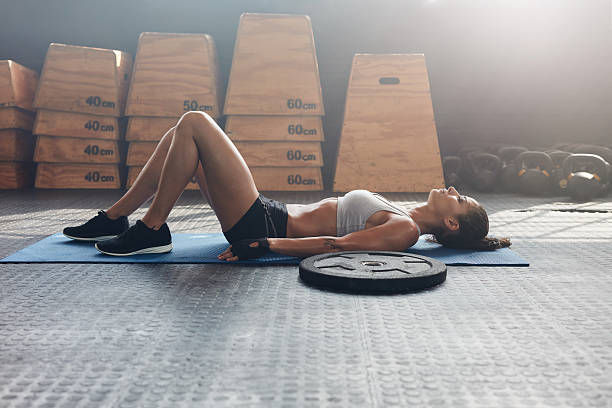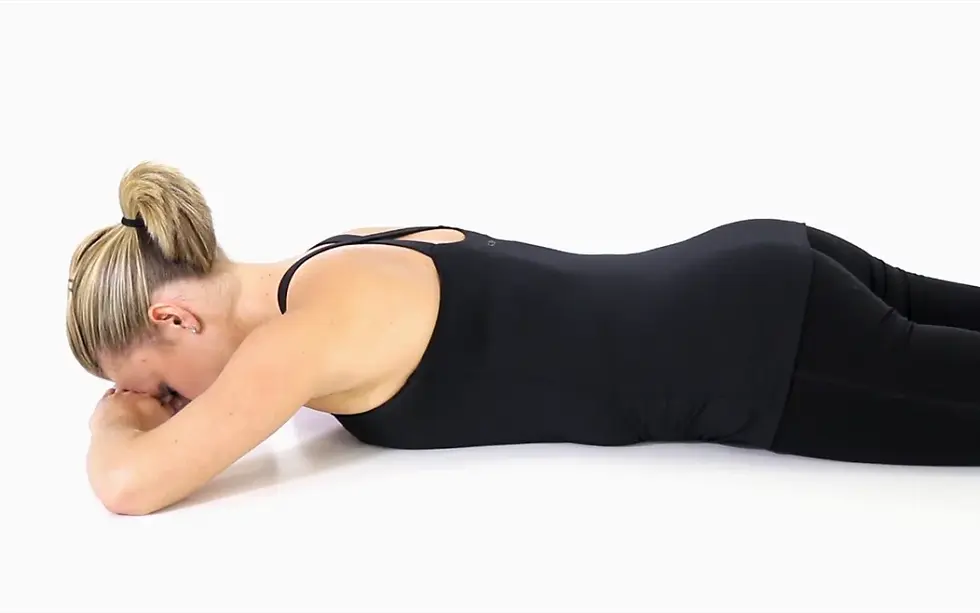How to Breathe Better During Exercise: Improve Endurance, Recovery & Reduce Shoulder Pain
- Nick Fulco

- Sep 28
- 5 min read
Introduction: How to Breathe Better During Exercise: Improve Endurance, Recovery & Reduce Shoulder Pain
Breathing is often overlooked during exercise, yet it plays a critical role in performance, recovery, and musculoskeletal health. Proper diaphragmatic breathing improves oxygen delivery, delays fatigue, and decreases shoulder and neck tension. By understanding breathing mechanics, heart rate control, nasal breathing, and optimal recovery positioning, athletes can train more effectively and reduce the risk of pain or injury.

The Mechanics of Breathing
Breathing is driven primarily by the diaphragm, with accessory muscles recruited when needed.
Diaphragm as the Primary Muscle: Contracts downward during inhalation, drawing air into the lungs; relaxes upward during exhalation.
Bucket Handle Effect: The lower ribs move outward and upward, expanding the side-to-side diameter of the chest.
Pump Handle Effect: The upper ribs tilt forward, increasing front-to-back chest expansion.
Phases of Respiration:
Inhalation – Diaphragm contracts, external intercostals lift ribs.
Exhalation (Passive) – Diaphragm relaxes, lungs recoil.
Forced Exhalation (Active) – Abdominal muscles and internal intercostals push air out.

Accessory Muscles of Breathing:
These muscles are used during forced inhalation: Scalenes, sternocleidomastoid, upper trapezius, pectoralis minor, and intercostals. Overactivation during inhalation signals poor diaphragmatic engagement and can contribute to shoulder and neck tension.

Why Inhalation Should Engage Only the Diaphragm:
Reduces unnecessary tension in accessory muscles.
Encourages full lung expansion through the bucket handle effect.
Improves oxygen uptake, supporting endurance.
Optimal Breathing Positions During Recovery
How you position your body between sets or intervals can enhance recovery and diaphragm function:
Avoid Lying Flat on Your Back
Supine flat positioning (legs resting on floor) can restrict diaphragmatic movement due to abdominal pressure on the diaphragm, increasing reliance on accessory muscles and promoting shallow chest breathing (5).
Tip: If you are going hit the floor after a nasty round of AMRAP burpees, bend your knees as close to 90 degrees as possible, or place them over a bench, or place your feet on the wall. This improves the overall length-tension relationship on surrounding musculature and allows your diaphragm to contract easier as seen in the image below in hook-lying.

Recommended Positions
Forward Lean “Tripod” Position: Hands on knees, torso slightly forward; stabilizes shoulders and maximizes diaphragmatic leverage (6).

Yes, your high school coach was wrong. Tell them to @ me. Side-Lying or Crocodile Breathing: Promotes posterior rib cage expansion for better diaphragm function (6).

Quadruped Breathing: On hands and knees, spine neutral, inhale expanding the ribs and abdomen, exhale fully. This position enhances diaphragm mobility, stabilizes the spine, and reduces accessory muscle recruitment (6,7).

Tip: Inhale slowly through the nose, expand ribs and abdomen, and exhale longer through the mouth.
Nasal Breathing for Performance and Recovery
Nasal inhalation with mouth exhalation during aerobic exercise offers measurable benefits:
Improved Oxygenation: Nasal breathing can increase oxygen uptake by up to 20%, enhancing performance (9).
Better Recovery: Slower heart rates and faster recovery between intervals have been observed with nasal breathing (9,10).
Increased Tidal Volume: Resistance from nasal airflow improves diaphragmatic engagement (9).
Hydration Benefits: Nasal breathing retains moisture in the airways, reducing dehydration risk during exercise and decreasing that dreaded cotton-mouth sensation (9).
Tip: Inhale through the nose and exhale through the mouth during cardio or high-intensity intervals to optimize oxygen delivery and energy production.

Assessing Your Diaphragmatic Ability
Drill 1: Supine Hand Test
Lie on your back with knees bent. Place one hand on your chest and one on your belly.
Inhale: Only your belly hand should rise; minimal chest movement indicates proper diaphragm use.

Drill 2: Seated Breathing Check
Sit upright, shoulders relaxed, hands on lower ribs.
Inhale through the nose, expand the ribs outward, exhale slowly through the mouth.
Shoulder movement indicates accessory muscle overuse; focus on slower, deeper breaths.

Managing Breathing Under Fatigue
Fatigue often triggers shallow, chest-dominant breathing:
Common Mistakes:
Holding the breath excessively (extended Valsalva).
Shoulder shrugging with each breath.
Early mouth breathing before intensity demands it.
Active Breathing Corrections During Workouts
Even mid-set, you can regain control if breathing becomes shallow or rapid:
Mini Reset Breaths
Pause briefly, inhale through the nose filling the belly, exhale fully through the mouth.
Helps lower heart rate and restore oxygen delivery.
Pursed-Lip Exhalation
Exhale through slightly pursed lips for 2–3 seconds, controlling airflow.
Reduces accessory muscle overuse and helps maintain steady rhythm during fatigue.
Partial Set Focus
Slow down or lighten load temporarily to concentrate on diaphragmatic inhalation and controlled exhalation.
Posture Adjustment
Shift to forward lean or quadruped briefly between reps or rounds to maximize diaphragm expansion.
Rhythmic Counting
Inhale for 2–3 counts, exhale for 3–4 counts. Counting keeps breathing controlled and prevents panicked, shallow breaths.
Conclusion
Breathing is a powerful performance tool. By emphasizing diaphragmatic control, nasal inhalation, mouth exhalation, recovery-friendly positions, and heart rate management, athletes can improve endurance, accelerate recovery, and protect the shoulders from overuse.

Actionable Takeaway:
Dedicate 5–10 minutes before, during, or after workouts to practice diaphragmatic breathing in proper positions. Your lungs, shoulders, and performance will improve. I hope you enjoyed learning how to breathe better during exercise.
References
Bordoni B, Marelli F, Morabito B, Sacconi B. The diaphragm in the body system. Int J Chron Obstruct Pulmon Dis. 2016;11:2603-2612.
McConnell AK. Respiratory muscle training as an ergogenic aid. J Exerc Sci Fit. 2012;10(2):62-67.
Russo MA, Santarelli DM, O’Rourke D. The physiological effects of slow breathing in the healthy human. Breathe. 2017;13(4):298-309.
Hodges PW, Gandevia SC. Activation of the human diaphragm during a repetitive postural task. J Physiol. 2000;522(Pt 1):165-175.
Norris W, et al. The effect of body position on diaphragmatic excursion. Respir Physiol Neurobiol. 2016;234:1-7.
Michaelson JV, et al. Effects of two different recovery postures during high-intensity interval training. J Strength Cond Res. 2019;33(2):334-340.
Li Y, et al. The impact of starting positions and breathing rhythms on heart rate and post-exercise oxygen consumption. Int J Environ Res Public Health. 2024;12(18):1889.
Skaggs JR, et al. Best body position to maximize ventilation in athletes. Int J Athletic Ther Train. 2016;21(1):30-35.
Moris JM, et al. Utilizing Nasal Breathing During Aerobic Exercise. ScienceDirect. 2025.
Lörinczi F, et al. Acute effect of different breathing regimens on muscular endurance and physiological variables. BMC Sports Sci Med Rehabil. 2024.

Disclaimer
All FHPT blog and article material is intended for educational purposes only. The content provided is based on general information and is within the scope of practice of physical therapists in the state of Louisiana. It should not be interpreted as medical advice, diagnosis, or treatment recommendations. Individual results may vary, and the information shared is not intended to substitute for professional medical consultation, diagnosis, or treatment. Before making any decisions regarding your health, wellness, or treatment, it is essential to consult with a qualified healthcare provider. Fulco & Hall Performance & Therapy (FHPT) assumes no responsibility or liability for any outcomes resulting from the use or application of the information provided.




Comments